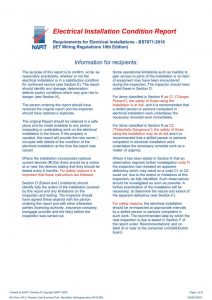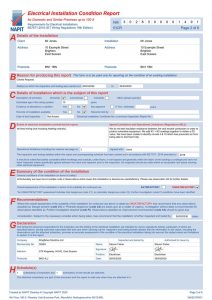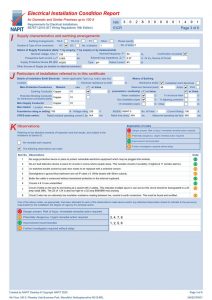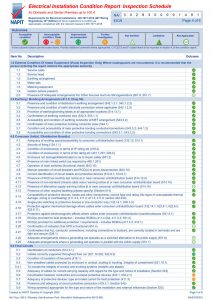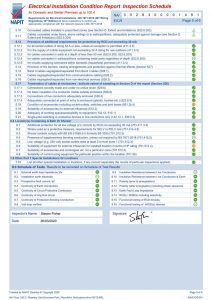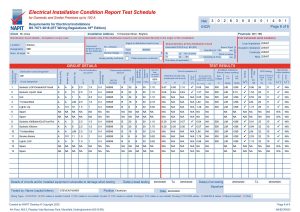What’s An EICR?
An EICR stands for electrical installation condition report. The best way to describe them is like an MOT for your wiring and we at Kingfisher Electrics are experts.
Why Might I Need An EICR?
There are several reasons why your installation may be due for an EICR. The latest one being applicable to private landlords throughout the UK.
Draft proposals which are widely expected to go through the government this year will stipulate that, as of 1st July 2020, all new privately tenanted properties will need to have a satisfactory certificate or risk being fined up to £30,000 by the local housing authority.
Existing tenancies will have until the 1st of April 2021 to have their testing and certification completed.
Other reasons include the following;
- You are considering buying a property and want to know if the electrics are safe or not? This could pre-warn you if the installation needs re-wiring or not, which could cost thousands!
- You own the property and haven’t had your wiring checked for 10 years or more.
- You have noticed ‘green goo’ similar looking to washing up liquid coming from sockets or switches.
- You are aware that there are rubber cables in use.
- You are aware that there are lead cables in use.
- You have an antiquated consumer unit which needs upgrading.
- You do not have RCD’s aka ‘trip switches’ protecting your sockets or lights.
- You do not have any earth bonding (green & yellow) cables clamped to within 600mm of your mains water stop cock or gas meter.
- You suspect there are some potentially dangerous wiring issues within the property.
- You want to connect additional sockets or switches to existing circuits but are unsure if they pass current regulations?
What’s Involved?
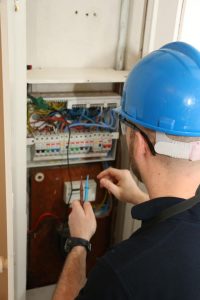
Our engineers conduct extremely thorough investigations into your entire installation. We leave no stone unturned and aim to test all circuits in the property.
The testing on average takes between 2 – 5 hours depending on the size/number of engineers involved in the procedure.
We would need access to all areas and will be checking all sockets and lights, etc. It is a very intrusive process so please ensure you have any private items out of sight before we begin.
It is worth noting that the power will be off for most of the test so those of you hoping to work from home during the investigation will be without Wi-Fi. It may be possible for you to use a dongle or your smartphone as a wireless hotspot instead.
Once the testing has been completed, we aim to issue you the report, invoice and quotation (if there are any remedial works required to bring the installation up to safety standards) within 2-3 working days.
The certificate itself details all our findings and lists any observations made by our engineers that may need attention. These observations each have a rating which indicates the following;
Code 1: (“Danger Present”), the safety of those using the installation is at risk and it is recommended that a skilled person or persons competent in electrical installation work undertakes the necessary remedial work immediately.
Code 1 Examples:
- Damaged sockets with exposed, live parts.
- Missing blank module at consumer unit which is big enough to fit fingers in.
Code 2: For items classified in Section K as C2 (“Potentially Dangerous”), the safety of those using the installation may be at risk and it is recommended that a skilled person or persons competent in electrical installation work undertakes the necessary remedial work as a matter of urgency. Where it has been stated in Section K that an observation requires further investigation code FI the inspection has revealed an apparent deficiency which may result on a code C1 or C2 could not, due to the extent or limitations of this inspection, be fully identified. Such observations should be investigated as soon as possible. A further examination of the installation will be necessary, to determine the nature and extent of the apparent deficiency.
Code 2 Examples:
- No RCD (aka ‘trip switch’) in place to protect bathroom circuits.
- No main earth bonding cables clamped within 600mm of your internal mains water stop cock and/or gas meter.
Code 3: These items aren’t dangerous per-se but do not meet the latest regulations. They are described as ‘improvement recommended’ only.
Code 3 Examples:
- Consumer unit is not fire rated.
- Absence of circuit labelling at consumer unit (aka fuse board).
Example of a failed EICR test:
Click here to download the full document.
The Installation Is ‘Unsatisfactory’ What Next?
If any observations made had the following codes: Code 1,2 or FI (further investigation required) then your installation will be deemed as unsatisfactory.
You will need to have these items taken care of by one of our qualified engineers before we can discount them from the report and sign the installation of as ‘satisfactory’.
Code 3 observations made are non-mandatory but are recommended if you would like to meet the latest safety regulations.
How Much Does An EICR Cost?
This depends on the size of property, number of consumer units and circuits within the installation.
Please call us on 01273 789 276 to find out how much an EICR would cost for your particular property.

